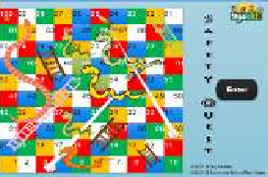Children today have grown up in the digital era. They are familiar with Facebook, Instagram, WhatsApp, LinkedIn, YouTube. Yet their proficiency with social media does not necessarily mean they are digitally literate.
Digital Literacy is simply the ability to use technology both effectively and appropriately. Appropriately means being able to understand what is acceptable and non-acceptable when using technology.
So how can we, as parents, educators, and leaders, help children be digital literate?
1. Educate them about digital literacy: It is important for children to know that digital literacy is not just about playing games on their smartphones or tablets. They need to understand that there is more to that. Digital literacy is been able to find, identify, evaluate and use information from the internet, smartphones, social media, video games, etc.
2. Integrate technology in the classroom: For the 21st-century child to be digitally literate, they need to be comfortable with using technology. Incorporate the use of technology in your classroom through research work, use of educational app, online videos/YouTube and presentations, and various digital tools. You can also facetime or skyping with experts to deliver classroom content.
3. Encourage the use of digital products: Children need to learn how to conduct research using the internet, social media and other digital tools. However, it is important to evaluate the quality, credibility, and validity of the information as well as give proper credit to the source.
4. Give proper credit when using other people’s work: In a world where anything can be copied, pasted, and even claimed as one’s own, it’s critical that children learn to correctly cite sources. This is an important aspect of digital literacy.
5. Talk about internet safety: Children need to be aware of internet safety basic and how to use the internet safely. They need to understand using strong passwords, privacy settings, respecting people’s privacy, not sharing private information such as their address, mobile number, etc with other strangers. Google has an awesome curriculum developed for kids entitled, Be Internet Awesome
6. Explain digital footprints: Children should be educated about their digital footprints. They need to know that whenever they create a profile, post something or comment on something, they are creating digital footprints that can be viewed by other people. All these create impressions of who they are, and these impressions can negatively impact on their college or job applications.
7. Talk about cyberbullying: Cyberbullying is the use of technology to harass, threaten or embrace or target another person. And it is important to help children avoid and deal with cyberbullying by empowering them with the information and strategies to protect themselves. Children are particularly vulnerable to cyberbullying as they may not fully recognize the limitations of the internet.
Lastly remember digital literacy is about using technology effectively and appropriately. No one gives a child a car to drive without teaching the child how to drive and the highway code.
As we expose children to the use of technology, we need to ensure that they know how to use it safely.
Test your child’s knowledge of internet safety with our fun and engaging game.

Download the 9ijakids app today for FREE access to 10 amazing games for a 30 days trial.
Don’t miss this opportunity!!!


